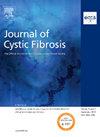Self-reported chronic therapy use after 24-weeks of follow-up by participants who completed the simplify randomized, controlled trial
IF 5.4
2区 医学
Q1 RESPIRATORY SYSTEM
引用次数: 0
Abstract
Background
Highly effective CFTR modulator therapy (HEMT) has improved the health of many people with cystic fibrosis (pwCF), offering opportunities to discontinue burdensome therapies. SIMPLIFY included randomized, controlled trials that confirmed non-inferiority of discontinuing versus continuing dornase alfa (DA) or hypertonic saline (HS) for 6 weeks in pwCF on HEMT. In this study of post-trial treatment use by SIMPLIFY participants, we hypothesized that randomization to discontinue DA or HS during the trial would be associated with a higher likelihood of non-use of each medication during follow-up.
Methods
We electronically surveyed SIMPLIFY participants every 4 weeks for 24 weeks after trial completion but before the main trial results were publicly disclosed. We asked them how often they used medications during the previous week. We estimated covariate-adjusted odds ratios (ORs) of DA or HS non-use by logistic regression with generalized estimating equations.
Results
After exclusions mostly due to lack of any surveys, 472 participants were included in the analysis population, 181 from the HS trial and 291 from the DA trial. Approximately half of the analysis population completed all six surveys. At every month of follow-up in both trials, the percentage of individuals reporting non-use of DA or HS during the previous week was greater among those randomized to discontinue therapy. Among participants with responses at 24 weeks, 30/122 (24.6 %) in the HS trial and 79/222 (35.6 %) in the DA trial reported non-use of the respective study medication. After adjusting for covariates, participants randomized to discontinue DA were 8.7-times (95 % CI: 4.3–17.7) more likely to not use DA during follow-up than those randomized to continue DA, and participants randomized to discontinue HS were 5.2-times (95 % CI: 2.1–12.8) more likely to not use HS during follow-up compared to those randomized to continue.
Conclusions
In healthy pwCF on ETI, randomization to discontinue DA or HS during SIMPLIFY was associated with greater odds of not using each medication after the trial compared to randomization to continue. These findings suggest that participation in a treatment discontinuation trial can influence participants’ post-trial treatment decisions. This possibility may be relevant during discussions about research participation and clinical care.
完成简化随机对照试验的参与者在随访 24 周后自我报告的慢性疗法使用情况。
背景:高效的 CFTR 调节剂疗法(HEMT)改善了许多囊性纤维化患者(pwCF)的健康状况,为他们提供了中止繁重疗法的机会。SIMPLIFY 纳入的随机对照试验证实,在接受 HEMT 治疗的囊性纤维化患者中,停用多纳酶α(DA)或高渗盐水(HS)6 周与继续使用多纳酶α或高渗盐水(HS)相比无劣效性。在这项关于 SIMPLIFY 参与者试验后治疗使用情况的研究中,我们假设在试验期间随机停用 DA 或 HS 与随访期间不使用每种药物的可能性较高有关:在试验结束后、主要试验结果公开之前的 24 周内,我们每 4 周对 SIMPLIFY 参与者进行一次电子调查。我们询问了他们上周使用药物的频率。我们通过使用广义估计方程的逻辑回归估算了经协方差调整的DA或HS不使用的几率比(ORs):主要由于缺乏任何调查而被排除后,472 名参与者被纳入分析人群,其中 181 人来自 HS 试验,291 人来自 DA 试验。大约一半的分析人群完成了全部六项调查。在这两项试验的每个月的随访中,报告在前一周未使用 DA 或 HS 的人数比例在随机中止治疗的人群中更高。在 24 周时有回复的参与者中,HS 试验中有 30/122 人(24.6%)和 DA 试验中有 79/222 人(35.6%)报告未使用相应的研究药物。调整协变量后,随机停用DA的参与者在随访期间不使用DA的可能性是随机继续DA者的8.7倍(95 % CI:4.3-17.7),随机停用HS的参与者在随访期间不使用HS的可能性是随机继续HS者的5.2倍(95 % CI:2.1-12.8):结论:在接受 ETI 治疗的健康男性和女性患者中,与随机选择继续治疗相比,在 SIMPLIFY 试验期间随机选择停用 DA 或 HS 与试验结束后不使用每种药物的几率更大相关。这些研究结果表明,参与终止治疗试验会影响参与者试验后的治疗决定。在讨论参与研究和临床治疗时,这种可能性可能与之相关。
本文章由计算机程序翻译,如有差异,请以英文原文为准。
求助全文
约1分钟内获得全文
求助全文
来源期刊

Journal of Cystic Fibrosis
医学-呼吸系统
CiteScore
10.10
自引率
13.50%
发文量
1361
审稿时长
50 days
期刊介绍:
The Journal of Cystic Fibrosis is the official journal of the European Cystic Fibrosis Society. The journal is devoted to promoting the research and treatment of cystic fibrosis. To this end the journal publishes original scientific articles, editorials, case reports, short communications and other information relevant to cystic fibrosis. The journal also publishes news and articles concerning the activities and policies of the ECFS as well as those of other societies related the ECFS.
 求助内容:
求助内容: 应助结果提醒方式:
应助结果提醒方式:


